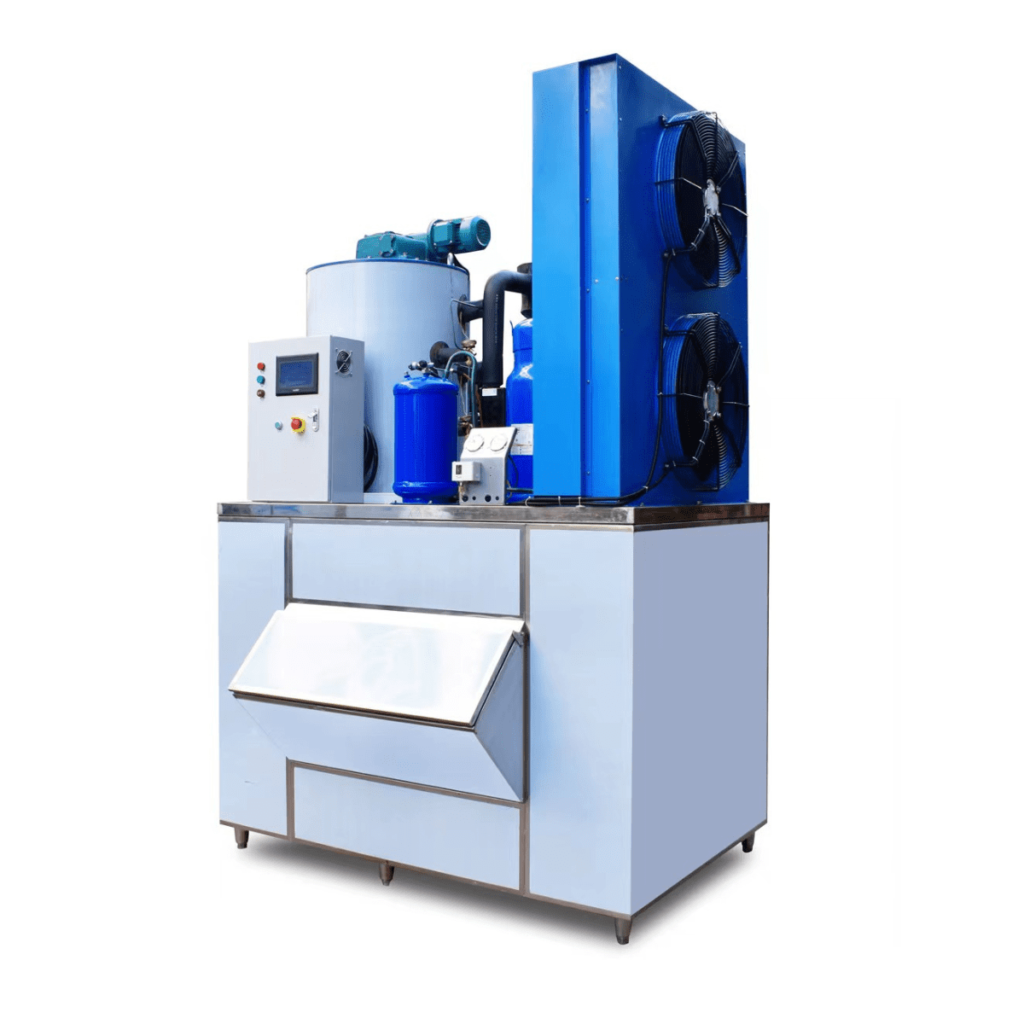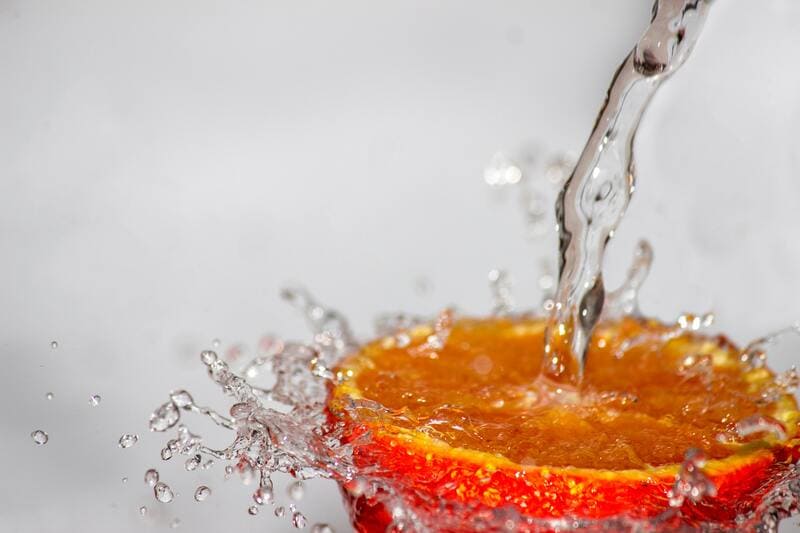Ice is common in our daily lives, from chilling our drinks to keeping our food fresh. But making ice is more complicated than you might think. Have you ever wondered about how much water goes into making ice? It may seem simple, but the answer may surprise you. So, how much water does it take to make ice?
The amount of water required to make ice depends on the method used. But most ice makers need about 12-14 gallons of water to make 100 pounds of ice. The machine cools the refrigeration system and freezes the water in the ice trays. Commercial ice makers consume more water than residential models. This is especially true for an air-cooled ice machine or water-cooled machine.
This article will explore how much water it takes to make ice and the ice-making process. We’ll also look at the ways to conserve water during ice production. So, if you need to learn more about the connection between water and ice, keep reading! You’ll learn how to reduce water usage while enjoying the benefits of ice.
The Science of Making Ice
Making ice is the science of thermodynamics and the principles of heat transfer. Ice formation occurs when water freezes and you remove heat from the water until. The freezing point of water is 32°F (0°C) at sea level. But this temperature can vary depending on factors such as pressure and impurities.
Removing heat from the water to create ice is refrigeration. Refrigeration systems work by compressing and expanding refrigerant gases. The gases absorb and release heat as they change state. The compressed gas becomes hot, while the expanded gas becomes cold. The cold gas cools the water, which then freezes to create ice.
Several environmental factors affect how fast water freezes. But, the material of the ice cube tray does not affect how long it takes for the water to freeze and turn into ice cubes. It shouldn’t matter whether you have a silicone or standard plastic ice tray.
But there are exceptions to this rule. It will take longer for the ice tray to freeze if the material used to make it changes the temperature of the water.
The Role of Water in the Ice-Making Process

Water is the primary ingredient in the ice-making process. The water’s quality and temperature can impact the ice’s quality and production rate. Impurities in the water, such as minerals or bacteria, can affect the taste and appearance of the ice. Warm or hot liquid water can slow the freezing process.
Using clean water at or near freezing temperature is essential for quality ice. Using cold water helps to speed up the freezing process and produces clearer harder ice. The water is then pumped into the ice machine, frozen, and harvested as ice.
Overview of Different Types of Ice Machines and How They Work
Several types of ice-making machines are available on the market. Each with unique characteristics and applications. The most common types of ice machines include cubed, flake, and tube ice machines.
Cube Ice Machines
Cubed machines produce the classic ice cubes used in drinks. They are the most common type of ice machine used in food service operations. These machines work by freezing water in a mold.
They then release the ice by heating the mold or using a mechanical arm to dislodge the cubes. Cubed ice machines need the least amount of water to produce ice.
Flake Ice Machines

Flake ice machines produce small, irregularly-shaped ice flakes. It is common in food displays, such as seafood or salad bars and medical facilities. These machines use a cylindrical evaporator to freeze water. They then scrape the ice off the surface with a rotating blade. Flake ice machines need more water to produce ice than cubed machines.
Tube Ice Machines
Tube ice machines produce cylindrical ice tubes often used in industrial applications. Such applications include cooling systems or concrete production.
These machines spray water onto a refrigerated tube, freeing it as it flows down the tube. The ice is then harvested by heating the tube or using a mechanical cutter. Tube machines need the most room-temperature water to produce ice.
Understanding the science behind ice-making and the types of machines is crucial. It helps ice makers choose the best machine for their needs and maximize efficiency.

How Much Water Does it Take to Make Ice?
The amount of water required to make ice depends on the ice produced. Tube and flake ice machines need more water than cubed or crushed ice machines. Let’s take a closer look at each type of ice.
Cubed Ice
Cubed ice machines need the least amount of water compared to other ice machines. It takes about 12 to 18 gallons of water to produce 100 pounds of ice. Cubed ice machines have a closed-loop system that recirculates the water to make ice.
Crushed Ice
Crushed ice machines are more water-efficient than cubed ice machines. It takes about 20 to 28 gallons of water to produce 100 pounds of crushed ice. Like cubed ice machines, crushed ice machines have a closed-loop water system.
Tube Ice
Tube ice machines need the most amount of water compared to other types of ice machines. It takes 30 to 50 gallons of water to produce 100 pounds of tube ice. Tube ice production involves freezing a thin layer of water inside vertical tubes. The tubes are then heated to release the ice.
Flake Ice
Flake ice machines need a significant amount of water to produce ice. It takes about 35 to 50 gallons of water to make 100 pounds of flake ice. This is because flake ice production involves spraying water onto a cooled surface. This freezes into thin layers of ice that are later scraped off.
Factors That Affect Water Usage in Ice-Making Operations
Various factors affect water usage in ice-making operations, including:
Ice-Making Method
The amount of water used in the ice-making process depends on the method used to produce the ice. For instance, large-scale commercial ice-making operations use more water than home ice-making machines. This is due to the higher output of ice produced.
Type of Machine
The type of ice maker used can also impact water usage. As we saw earlier, tube and flake ice machines need more water than cubed or crushed ice machines.
Ice-Making Machine Size
The size of the ice-making machine can also influence the amount of water used. Larger machines consume more water than smaller ones because they produce more ice.
Machine’s Production Capacity
The machine’s production capacity can also impact water usage. Machines producing more ice may need more water.
Ice-Making Cycle
The length of the ice-making cycle affects the amount of water used in the process. Longer cycles need more water to produce the same amount of ice than shorter ones.
Water Quality
The water quality used in the ice-making process can also impact water usage. Water with high impurities needs more water to produce the same amount as cleaner water.

Temperature
The water temperature used in the ice-making process can also impact water usage. Warmer water may need more energy and water to produce ice than colder water.
Maintenance
Proper maintenance of ice-making equipment can also impact water usage. Equipment not maintained well may need more water to produce the same amount of ice. This is due to leaks or inefficient operation.
For example, a poorly-maintained ice maker uses more water than a well-maintained one. This is because leaks or the buildup of minerals can cause the machine to be less efficient.
Water Conservation Strategies for Ice-Making Operations
Water conservation is critical for ice-making operations. Here are some strategies to reduce water usage in ice-making operations.
Install a Water Recycling System
You can install a water recycling system in ice-making operations. It helps capture and recycle wastewater from the ice machine. This can reduce water usage and lower operational costs. By recycling wastewater, ice makers reduce water consumption and save money.
Conduct Regular Maintenance
Regular maintenance of ice machines can help reduce water usage. This is by ensuring that the machines operate well. It includes cleaning the condenser coils and ensuring the machine is leak-free. Maintaining the machine can work at its optimal level. It also reduces the amount of water required to produce ice.
Use an Ice Machine Sizing Strategy
Selecting the right size of ice machine can help reduce water usage. Oversized ice machines can consume more water than necessary. This means they need more water to produce the same amount of ice as a smaller machine. Choosing a good-sized ice machine can reduce water usage and operational costs.
Use Energy-Efficient Equipment
Upgrading to energy-efficient equipment can help reduce water usage in ice-making operations. Energy-efficient machines use less water and produce the same amount of ice as others. This can help reduce water usage and lower operational costs.
Use Cold Water
Using cold water to make ice can help reduce the amount of water required to produce ice. This is because colder water can freeze faster, reducing the time needed to produce ice. Also, using cold air or water reduces the energy needed to make ice, reducing costs.
Check Water Usage
Monitoring water usage can help identify areas where you can conserve water. Ice makers can identify inefficiencies in their operations by tracking water consumption. This helps them make changes to reduce water usage. These include repairing leaks, upgrading efficient equipment, or a water recycling system.
The Benefits of Reducing Water Usage in Ice-Making
Water is a great resource, and reducing its usage in ice-making can lead to various benefits. Here are the benefits of reducing water usage in ice-making.
Cost Savings
Reducing water usage leads to cost savings for commercial and residential operations. Water bills can be a significant expense in commercial operations. Reducing water usage can help cut costs. Residential ice-making can also reduce water bills, leading to long-term cost savings.
Energy Savings
Reducing water usage in ice-making can also lead to energy savings. Making ice requires energy to freeze the water. Reducing water usage can lead to reduced energy consumption. This can help reduce carbon emissions, leading to a more sustainable future.
Environmental Benefits
Reducing water usage in ice-making can also have environmental benefits. We can conserve this precious resource by reducing the water needed for ice-making. This is especially crucial in areas where water scarcity is an issue. Additionally, reducing water usage helps reduce the strain on water treatment plants. This leads to a healthier environment.
Increased Efficiency
Reducing water usage in ice-making can increase efficiency in the ice-making process. Less water reduces the freezing time it takes to make ice, increasing productivity. This can be especially beneficial in retail operations, where time is of the essence.
Better Ice Quality
Reducing water usage in ice-making can also lead to better ice quality. The ice can be denser and less likely to melt faster with less water. This can lead to a better experience for those using the ice, whether in retail or residential.

Examples of Companies that Have Implemented Water Conservation Strategies
Several companies have implemented water conservation strategies in their ice-making operations. This shows it is possible to reduce water usage without reducing the quality or quantity of the ice.
One example is Reddy Ice, the largest packaged ice manufacturer in the United States. In recent years, this company has implemented several water conservation strategies. These include reducing water used and implementing a recycling program to reuse water.
Another example is the Coca-Cola Company. The company has set a goal to reduce the amount of water used in its beverage production operations by 25% by 2020. The company uses water-saving technologies to produce tube ice and flake ice. Furthermore, they use their beverage bottling plants to achieve this goal.
Finally, Hiceay Ice Systems, a leading manufacturer of ice machines, develops water-efficient machines. These machines use up to 40% less water than traditional ice machines.
These machines use a unique spray system to create ice. The system reduces water usage while maintaining the quality and quantity of ice.
Companies need to put in place these and other water conservation strategies. This way, they reduce environmental impact, improve product quality, and save on costs. They can do this all while contributing to the global effort to conserve water resources.
Conclusion
The water required to make ice depends on the ice produced. Cubed ice machines need the least water, while tube and flake ice machines need the most. Several factors can impact water usage. These include the production capacity, the ice machine type, and the water temperature.
Water conservation is critical for ice-making operations. It can reduce the impact of ice production on the environment and lower costs. Implementing a water recycling system and conducting regular maintenance is crucial. Also, using energy-efficient equipment can reduce water usage.
By implementing these strategies, ice makers can reduce their water consumption. You can also save money on water bills and operate more sustainable manner.


